
The Olympic sailing classes have been used in the sport of Sailing/Yachting during the Olympic Summer Games since 1896. Since then, 46 different classes have been used.

The Olympic sailing classes have been used in the sport of Sailing/Yachting during the Olympic Summer Games since 1896. Since then, 46 different classes have been used.
Over a period of more than 112 years, in a sport that uses complex technical equipment, classes will be discontinued for use at the Olympics. Reasons for discontinuation of a class varied from economical, logistical and technological to emotional and even political. Some of the discontinued classes remain very strong International - or National classes. Others filled a niche in a specific area like sailing schools or local club racing. Some faded away.
The "Former Olympic Sailing Classes", together with their crews form an important and significant part of the history of sailing in general and Olympic Sailing in particular. These tables give an overview of the classes and when they were used for Olympic sailing.
| Category | Class | 1932 | 1936 | 1948 | 1952 | 1956 | 1960 | 1964 | 1968 | 1972 | 1976 | 1980 | 1984 | 1988 | 1992 | 1996 | 2000 | 2004 | 2008 | 2012 | 2016 | 2020 | 2024 | ||||||||||||||||||||||||||||||||||||||||||||||||||||||||||||||||||||||||||||
|---|---|---|---|---|---|---|---|---|---|---|---|---|---|---|---|---|---|---|---|---|---|---|---|---|---|---|---|---|---|---|---|---|---|---|---|---|---|---|---|---|---|---|---|---|---|---|---|---|---|---|---|---|---|---|---|---|---|---|---|---|---|---|---|---|---|---|---|---|---|---|---|---|---|---|---|---|---|---|---|---|---|---|---|---|---|---|---|---|---|---|---|---|---|---|---|---|---|---|---|
| Dinghy | 470 | • | • | • | M&F | M&F | M&F | M&F | M&F | M&F | M&F | M&F | M&F | Mix | |||||||||||||||||||||||||||||||||||||||||||||||||||||||||||||||||||||||||||||||||||||
| 49er | P | P | P | P | M | M | M | ||||||||||||||||||||||||||||||||||||||||||||||||||||||||||||||||||||||||||||||||||||||||||||
| 49er FX | F | F | F | ||||||||||||||||||||||||||||||||||||||||||||||||||||||||||||||||||||||||||||||||||||||||||||||||
| Laser Standard | • | • | • | M | M | M | M | M | |||||||||||||||||||||||||||||||||||||||||||||||||||||||||||||||||||||||||||||||||||||||||||
| Laser Radial | F | F | F | F | F | ||||||||||||||||||||||||||||||||||||||||||||||||||||||||||||||||||||||||||||||||||||||||||||||
| Multihull | Nacra 17 | Mix | Mix | Mix | |||||||||||||||||||||||||||||||||||||||||||||||||||||||||||||||||||||||||||||||||||||||||||||||
| Sailboard | IQFoil | M&F | |||||||||||||||||||||||||||||||||||||||||||||||||||||||||||||||||||||||||||||||||||||||||||||||||
| Kiteboard | Formula Kite | M&F | |||||||||||||||||||||||||||||||||||||||||||||||||||||||||||||||||||||||||||||||||||||||||||||||||
| Category | Class | 1900 | 1904 | 1908 | 1912 | 1920 | 1924 | 1928 | 1932 | 1936 | |||||||||||||||||||||||||||||||||||||||||||||||||||||||||||||||||||||||||||||||||||||||||
|---|---|---|---|---|---|---|---|---|---|---|---|---|---|---|---|---|---|---|---|---|---|---|---|---|---|---|---|---|---|---|---|---|---|---|---|---|---|---|---|---|---|---|---|---|---|---|---|---|---|---|---|---|---|---|---|---|---|---|---|---|---|---|---|---|---|---|---|---|---|---|---|---|---|---|---|---|---|---|---|---|---|---|---|---|---|---|---|---|---|---|---|---|---|---|---|---|---|---|---|
| Ton classes | 1⁄2 Ton | • | |||||||||||||||||||||||||||||||||||||||||||||||||||||||||||||||||||||||||||||||||||||||||||||||||
| 1⁄2–1 Ton | • | ||||||||||||||||||||||||||||||||||||||||||||||||||||||||||||||||||||||||||||||||||||||||||||||||||
| 1–2 Ton | • | ||||||||||||||||||||||||||||||||||||||||||||||||||||||||||||||||||||||||||||||||||||||||||||||||||
| 2–3 Ton | • | ||||||||||||||||||||||||||||||||||||||||||||||||||||||||||||||||||||||||||||||||||||||||||||||||||
| 3–10 Ton | • | ||||||||||||||||||||||||||||||||||||||||||||||||||||||||||||||||||||||||||||||||||||||||||||||||||
| 10–20 Ton | • | ||||||||||||||||||||||||||||||||||||||||||||||||||||||||||||||||||||||||||||||||||||||||||||||||||
| Open | • | ||||||||||||||||||||||||||||||||||||||||||||||||||||||||||||||||||||||||||||||||||||||||||||||||||
| Square Meter Skerry Cruiser classes | 30m2 | • | |||||||||||||||||||||||||||||||||||||||||||||||||||||||||||||||||||||||||||||||||||||||||||||||||
| 40m2 | • | ||||||||||||||||||||||||||||||||||||||||||||||||||||||||||||||||||||||||||||||||||||||||||||||||||
| Jauge chemin de fer classes | 6.5 Metre | • | |||||||||||||||||||||||||||||||||||||||||||||||||||||||||||||||||||||||||||||||||||||||||||||||||
| 8.5 Metre | • | ||||||||||||||||||||||||||||||||||||||||||||||||||||||||||||||||||||||||||||||||||||||||||||||||||
| Metre classes | 6 Metre | • | • | • | • | • | • | • | |||||||||||||||||||||||||||||||||||||||||||||||||||||||||||||||||||||||||||||||||||||||||||
| 7 Metre | • | • | |||||||||||||||||||||||||||||||||||||||||||||||||||||||||||||||||||||||||||||||||||||||||||||||||
| 8 Metre | • | • | • | • | • | • | • | ||||||||||||||||||||||||||||||||||||||||||||||||||||||||||||||||||||||||||||||||||||||||||||
| 9 Metre | • | ||||||||||||||||||||||||||||||||||||||||||||||||||||||||||||||||||||||||||||||||||||||||||||||||||
| 10 Metre | • | • | |||||||||||||||||||||||||||||||||||||||||||||||||||||||||||||||||||||||||||||||||||||||||||||||||
| 12 Metre | • | • | • | ||||||||||||||||||||||||||||||||||||||||||||||||||||||||||||||||||||||||||||||||||||||||||||||||
| 15 Metre | • | ||||||||||||||||||||||||||||||||||||||||||||||||||||||||||||||||||||||||||||||||||||||||||||||||||
| Monotype classes | 12 foot dinghy | • | • | ||||||||||||||||||||||||||||||||||||||||||||||||||||||||||||||||||||||||||||||||||||||||||||||||
| 18 foot dinghy | • | ||||||||||||||||||||||||||||||||||||||||||||||||||||||||||||||||||||||||||||||||||||||||||||||||||
| French National Monotype 1924 | • | ||||||||||||||||||||||||||||||||||||||||||||||||||||||||||||||||||||||||||||||||||||||||||||||||||
| Snowbird | • | ||||||||||||||||||||||||||||||||||||||||||||||||||||||||||||||||||||||||||||||||||||||||||||||||||
| O-Jolle | • | ||||||||||||||||||||||||||||||||||||||||||||||||||||||||||||||||||||||||||||||||||||||||||||||||||
| Keelboat | Star | • | • | ||||||||||||||||||||||||||||||||||||||||||||||||||||||||||||||||||||||||||||||||||||||||||||||||
| Category | Class | 1948 | 1952 | 1956 | 1960 | 1964 | 1968 | 1972 | 1976 | 1980 | 1984 | 1988 | 1992 | 1996 | 2000 | 2004 | 2008 | 2012 | 2016 | 2020 | |||||||||||||||||||||||||||||||||||||||||||||||||||||||||||||||||||||||||||||||
|---|---|---|---|---|---|---|---|---|---|---|---|---|---|---|---|---|---|---|---|---|---|---|---|---|---|---|---|---|---|---|---|---|---|---|---|---|---|---|---|---|---|---|---|---|---|---|---|---|---|---|---|---|---|---|---|---|---|---|---|---|---|---|---|---|---|---|---|---|---|---|---|---|---|---|---|---|---|---|---|---|---|---|---|---|---|---|---|---|---|---|---|---|---|---|---|---|---|---|---|
| Dinghy | Firefly | M | |||||||||||||||||||||||||||||||||||||||||||||||||||||||||||||||||||||||||||||||||||||||||||||||||
| 12m2 Sharpie | • | ||||||||||||||||||||||||||||||||||||||||||||||||||||||||||||||||||||||||||||||||||||||||||||||||||
| Flying Dutchman | • | • | • | • | • | • | • | • | • | ||||||||||||||||||||||||||||||||||||||||||||||||||||||||||||||||||||||||||||||||||||||||||
| Europe | F | F | F | F | |||||||||||||||||||||||||||||||||||||||||||||||||||||||||||||||||||||||||||||||||||||||||||||||
| Finn | • | • | • | • | • | • | • | • | • | • | H | H | H | H | HM | HM | HM | HM | |||||||||||||||||||||||||||||||||||||||||||||||||||||||||||||||||||||||||||||||||
| Keelboat | 6 Metre | M | • | ||||||||||||||||||||||||||||||||||||||||||||||||||||||||||||||||||||||||||||||||||||||||||||||||
| Swallow | M | ||||||||||||||||||||||||||||||||||||||||||||||||||||||||||||||||||||||||||||||||||||||||||||||||||
| 5.5 Metre | • | • | • | • | • | ||||||||||||||||||||||||||||||||||||||||||||||||||||||||||||||||||||||||||||||||||||||||||||||
| Dragon | M | • | • | • | • | • | • | ||||||||||||||||||||||||||||||||||||||||||||||||||||||||||||||||||||||||||||||||||||||||||||
| Elliott 6 | Fm | ||||||||||||||||||||||||||||||||||||||||||||||||||||||||||||||||||||||||||||||||||||||||||||||||||
| Soling | • | • | • | • | • | C | C | C | |||||||||||||||||||||||||||||||||||||||||||||||||||||||||||||||||||||||||||||||||||||||||||
| Star | M | • | • | • | • | • | • | • | • | • | • | • | • | M | M | M | |||||||||||||||||||||||||||||||||||||||||||||||||||||||||||||||||||||||||||||||||||
| Tempest | • | • | |||||||||||||||||||||||||||||||||||||||||||||||||||||||||||||||||||||||||||||||||||||||||||||||||
| Yngling | F | F | |||||||||||||||||||||||||||||||||||||||||||||||||||||||||||||||||||||||||||||||||||||||||||||||||
| Multihull | Tornado | • | • | • | • | • | • | • | • | • | |||||||||||||||||||||||||||||||||||||||||||||||||||||||||||||||||||||||||||||||||||||||||
| Sailboard | Windglider | M | |||||||||||||||||||||||||||||||||||||||||||||||||||||||||||||||||||||||||||||||||||||||||||||||||
| Division II | M | ||||||||||||||||||||||||||||||||||||||||||||||||||||||||||||||||||||||||||||||||||||||||||||||||||
| Lechner A–390 | M+F | ||||||||||||||||||||||||||||||||||||||||||||||||||||||||||||||||||||||||||||||||||||||||||||||||||
| Mistral One Design Class | M+F | M+F | M+F | ||||||||||||||||||||||||||||||||||||||||||||||||||||||||||||||||||||||||||||||||||||||||||||||||
| RS:X | M&F | M&F | M&F | M&F | |||||||||||||||||||||||||||||||||||||||||||||||||||||||||||||||||||||||||||||||||||||||||||||||

Sailing/Yachting made its first appearance as an Olympic sport at the 1900 Summer Olympics after competitions were cancelled at the 1896 Olympics. With the exception of 1904, sailing was thereafter always a part of the Olympic program. The sailing program in 1900 consisted of a total of eight sailing classes. For six classes, the races were scheduled from 20 – 27 May at the river Seine around Meulan, and several series of three races were held for the largest classes from 1–5 August on the North Atlantic off the coast of Le Havre. Approximately 150 sailors in 64 boats from 6 nations competed, including 1 woman, Hélène de Pourtalès, who won a gold medal in the 1 to 2 ton.

Dinghy racing is a competitive sport using dinghies, which are small boats which may be rowboats, have an outboard motor, or be sailing dinghies. Dinghy racing has affected aspects of the modern sailing dinghy, including hull design, sail materials and sailplan, and techniques such as planing and trapezing.

World Sailing (WS) is the world governing body for the sport of sailing recognized by the International Olympic Committee and the International Paralympic Committee (IPC).

The 470 (Four-Seventy) is a double-handed monohull planing dinghy with a centreboard, Bermuda rig, and centre sheeting. Equipped with a spinnaker, trapeze and a large sail-area-to-weight ratio, it is designed to plane easily, and good teamwork is necessary to sail it well. The name comes from the boat's length of 470 centimetres.
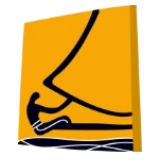
Sailing/Yachting is an Olympic sport that has been part of the Olympic programme starting from the Games of the 1st Olympiad. With the exception of 1904 and possibly the canceled 1916 Summer Olympics, sailing has always been included on the Olympic schedule. The Sailing program in 2004 consisted of eleven disciplines divided over nine sailing classes. For each discipline multiple races were scheduled between 14 and 28 August 2004 along the coast near Athens. Athens hosted the Olympic sailing competitions for the second time, having previously done so during the 1896 Summer Olympics. However, in 1896, the sailing competition was cancelled due to heavy storms and further bad weather conditions. This time the weather conditions were good. The sailing event was executed on the several types of Olympic courses in different course areas using the 'Fleetrace' and 'Matchrace' formats.
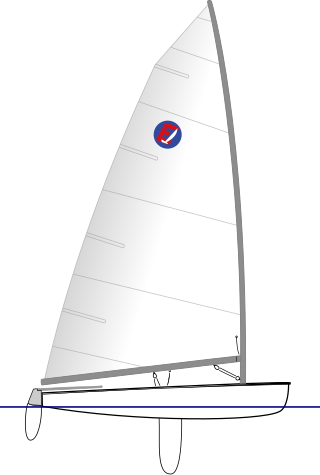
The Europe is a one-person dinghy designed in Belgium in 1960 by Alois Roland as a class legal Moth dinghy. The design later changed into its own one-design class.
Sailing/Yachting is an Olympic sport starting from the Games of the 1st Olympiad. With the exception of the 1904 and the canceled 1916 Summer Olympics, sailing has always been included on the Olympic schedule. The Sailing program of 1908 was open for a total of five sailing classes (disciplines), but actually only four Sailing events were contested. The planned venue of all races, named matches, was Ryde, Isle of Wight.
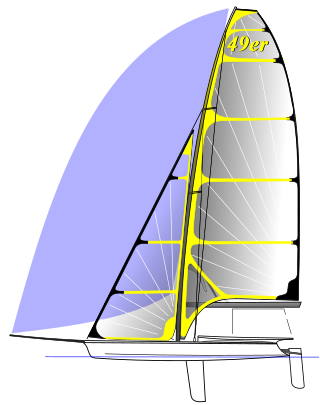
The 49er and 49er FX is a two-handed skiff-type high-performance sailing dinghy. The two crew work on different roles with the helm making many tactical decisions, as well as steering, and the crew doing most of the sail control. Both of the crew are equipped with their own trapeze and sailing is done while cantilevered over the water to the fullest extent to balance against the sails.

Sailing has been one of the Olympic sports since the Games of the I Olympiad, held in Athens, Greece, in 1896. Despite being scheduled in the first Olympic program, the races were canceled due to severe weather conditions. Apart from the 1904 Summer Olympics, sailing has been present in every edition of the Olympic Games.
Sailing/Yachting is an Olympic sport starting from the Games of the 1st Olympiad. With the exception of 1904 and possibly the canceled 1916 Summer Olympics, sailing has always been included on the Olympic schedule. The Sailing program of 1996 consisted of a total of ten sailing classes (disciplines). For each class, with the exception of the Soling, eleven races were scheduled from 22 July to 2 August 1996 off the coast of Savannah at the Wassaw Sound. For the Soling ten fleetraces were scheduled followed by a series of matchraces for the top 6 boats of the fleetrace result.

Sailing/Yachting is an Olympic sport starting from the Games of the 1st Olympiad. With the exception of 1904 and the canceled 1916 Summer Olympics, sailing has always been included on the Olympic schedule. The Sailing program of 1932 consisted of a total of four sailing classes (disciplines). For each class races were scheduled from 5–12 August directly off the Los Angeles Harbor on the Pacific Ocean.

The Vintage Yachting Games are an international Quadrennial multi class sailing event for former Olympic classes and the former Classes of the Paralympic Games. The Vintage Games is held every four years.
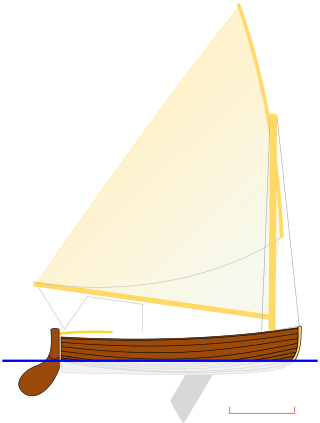
The Twelve Foot Dinghy was designed by George Cockshott, an amateur boat designer from Southport, England in response to a 1912 design contest. It became the first one-design racing dinghy to achieve international recognition. The class was granted the 'International' status by the IYRU in 1919 and remained this status until 1964 when it was revoked by the same authority. The class was selected as the dinghy class for the Olympics in 1920 & 1928. In 1924 the French wanted to use an alternate French design.

The 2008 Vintage Yachting Games was the first post-Olympic multi-class sailing event for discontinued Olympic classes. The event took place on the IJsselmeer of Medemblik, the Netherlands, from 20 September to 27 September 2008. A total of 66 sailors in 47 boats from 17 countries showed up to compete in six Vintage Yachting Classes

The 2012 Vintage Yachting Games was the second post-Olympic multi-class sailing event for discontinued Olympic classes. The event was held on 7–14 July 2012 on Lake Como in Italy. The organization of this event was in the hands of the Multilario, a joint venture of local yacht clubs at Lake Como. The Vintage Yachting Games Organization (VYGO) was the governing organization. A total of 225 sailors in 113 boats from 17 countries competed in seven Vintage Yachting Classes
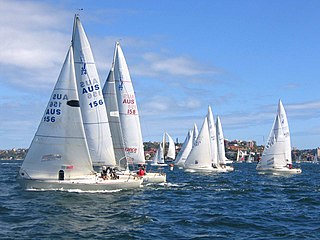
The sport of sailing involves a variety of competitive sailing formats that are sanctioned through various sailing federations and yacht clubs. Racing disciplines include matches within a fleet of sailing craft, between a pair thereof or among teams. Additionally, there are specialized competitions that include setting speed records. Racing formats include both closed courses and point-to-point contests; they may be in sheltered waters, coast-wise or on the open ocean. Most competitions are held within defined classes or ratings that either entail one type of sailing craft to ensure a contest primarily of skill or rating the sailing craft to create classifications or handicaps.

The 2018 Vintage Yachting Games was the third post-Olympic multi-class sailing event for discontinued Olympic and Paralympic Classes. The event was held from 16 to 22 September 2018 on Øresund, Copenhagen in Denmark. The organization of this event was executed by a joint venture of the Kongelig Dansk Yachtklub and the Hellerup Sejlklub. The Vintage Yachting Games Organization (VYGO) was the governing organization. The competition took place in 3 Vintage Yachting Classes.

Rudy den Outer is a sailor from the Netherlands, who represented his country at the 2008 Vintage Yachting Games in Medemblik, as helmsman in the Dutch Soling Sophie's Choice. Den Outer with crew members Leo Determan and Ronald den Arend took the Gold. In the 2012 Vintage Yachting Games, this time with crew members Gavin Lidlow and Ramzi Souli the team took the Silver medal in Bellano, Italy. In 2003 with helmsman Fred Imhoff and Richard van Rij he became European Champion in the Dragon at Kinsale, Ireland. Den Outer is also very active in the organization of major International Sailing events for Olympic and former Olympic classes.
The O-Jolle was an event on the 2018 Vintage Yachting Games program at Copenhagen, Denmark. Six out of the eight scheduled races were completed. Seven sailors, on seven boats, from two nations entered.
The 12' Dinghy International Rule was an event on the 2018 Vintage Yachting Games program at Copenhagen, Denmark. Six out of the eight scheduled races were completed. 22 sailors, on 19 boats, from nine nations entered.